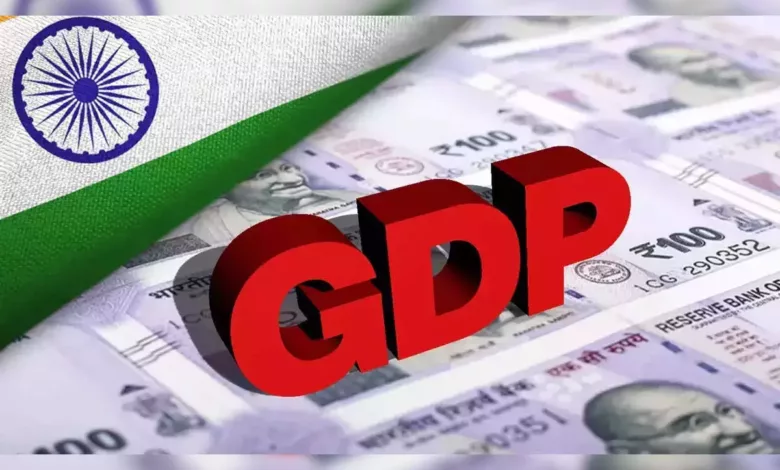Government Counters Accusations of Inflated GDP Figures, Cites Diverse Growth Metrics

Government Counters Accusations of Inflated GDP Figures, Cites Diverse Growth Metrics
The Ministry of Finance in India has issued a strong rebuttal to recent claims that the country’s Gross Domestic Product (GDP) data is inflated. The controversy arose when India’s real GDP growth was reported to be at 7.8% year-on-year in the first quarter of the fiscal year 2024. Critics raised questions about the accuracy of these figures, prompting the government to defend its calculations.
India employs the income or production approach to determine its real GDP growth, and the Ministry of Finance has asserted the validity of this methodology. In addition to defending its data, the government has urged critics to consider various other economic indicators, such as purchasing managers’ indices, bank credit growth, capital expenditure increases, and shifts in consumption patterns when assessing the nation’s growth trajectory.
The debate over the authenticity of GDP figures has once again brought the spotlight onto the intricacies of economic measurement and the reliability of data in a dynamic and rapidly changing economic landscape.

The GDP Controversy Unveiled
The controversy began when the Central Statistics Office (CSO) released its data showing that India’s GDP had grown by 7.8% year-on-year in the first quarter of the fiscal year 2024. Critics immediately questioned the accuracy of these figures, alleging that they had been inflated to present a rosier economic picture than the ground reality.
Opposition leaders, economists, and analysts raised concerns about the credibility of these numbers, especially in the wake of the pandemic’s impact on the economy. The skepticism surrounding the GDP figures led to demands for transparency and a closer examination of the data.
The Income Approach and Its Defenders
India, like many countries, employs multiple methods to calculate its GDP. The income approach, which assesses economic activity based on income generated, is one of the methods the country uses.
The Ministry of Finance, in its response, emphasized the legitimacy of the income approach. They argued that it provides an accurate representation of the economic growth in the country, accounting for income earned by households and businesses. This approach measures the actual income generated within the nation’s borders, which is an essential factor in determining economic health.
A Plea to Consider Diverse Metrics
In addition to defending its chosen methodology, the government has called upon critics to take a broader view of economic indicators to gauge India’s growth. They have cited several alternative measures that paint a more comprehensive picture of the nation’s economic trajectory.
1. Purchasing Managers’ Indices (PMI): PMI is a widely respected leading economic indicator that assesses the health of the manufacturing and services sectors. India’s consistently strong PMI figures, particularly in manufacturing, have been indicative of robust economic activity.
2. Bank Credit Growth: The growth in bank credit is often seen as a reflection of increased borrowing and economic expansion. The government pointed to the steady rise in bank credit as evidence of growing economic activity.
3. Increase in Capital Expenditure: A surge in capital expenditure, including government and private sector investments in infrastructure and projects, is seen as a positive sign for economic growth. The government highlighted the rise in such investments as an encouraging trend.
4. Consumption Pattern Shifts: Changes in consumer behavior can also be indicative of economic growth. The Ministry of Finance suggested that the shift in consumption patterns, such as increased spending on durable goods, signifies a thriving economy.

The Broader Context
It is crucial to place this controversy within the broader context of India’s economic challenges and ambitions. India, like many nations, faces economic complexities stemming from the COVID-19 pandemic and its aftermath.
The government has consistently maintained its goal of achieving robust economic growth to recover from the pandemic’s setbacks and ensure long-term prosperity for its citizens. The debate over GDP figures is just one aspect of this broader economic narrative.
The Role of Transparency and Accountability
Transparency and accountability in economic data are essential for fostering trust in the government’s policies and performance. Critics argue that accurate data is crucial for informed decision-making, economic planning, and effective policy implementation.
In this context, the government’s insistence on the validity of its data, combined with its call for a holistic view of economic indicators, underscores the importance of reliable economic statistics for the nation’s progress.

The Way Forward
As the debate over GDP figures continues, it is imperative that all stakeholders engage in a constructive dialogue to ensure that economic data accurately reflects ground realities. Transparency, credibility, and a commitment to data integrity should be at the forefront of these discussions.
Additionally, the government’s appeal to consider a range of economic indicators offers a broader perspective on India’s economic health. While GDP figures are crucial, they should not be viewed in isolation but rather as part of a mosaic of data that provides a comprehensive view of the nation’s economic well-being.
In conclusion, the controversy surrounding India’s GDP figures has once again highlighted the complexities of economic measurement and the need for transparent, accurate, and reliable data. It is essential for both the government and its critics to work together to ensure that India’s economic policies are grounded in sound data and aimed at fostering sustainable growth and prosperity for all its citizens.






